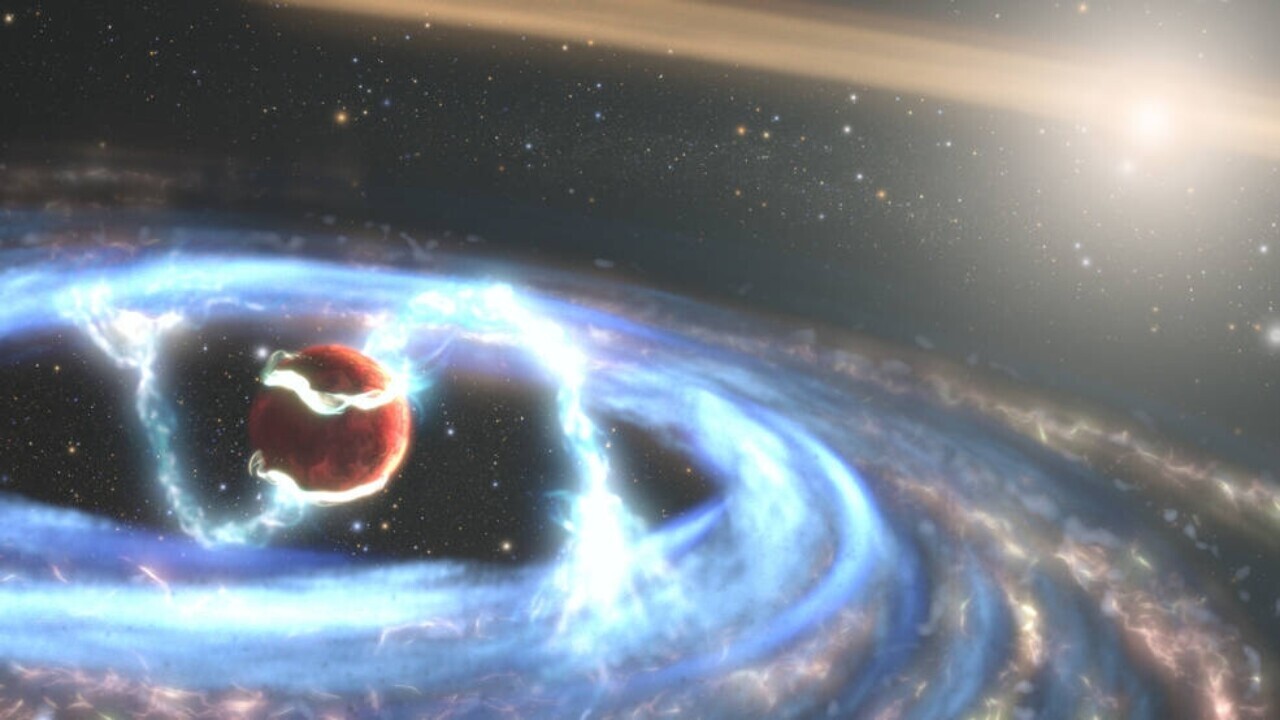
Finding forming planets is a tough but important job for astronomers: Only three planets have ever been discovered caught in the process of forming, and the most recent of these was found just weeks ago.
Evan Rich, a postdoctoral researcher at the University of Michigan, suggests that instead of looking for individual planets forming, astronomers might have better luck looking for the likely environments in which they form.
In doing just that, Rich and a team of astronomers have found that systems with stars less than three solar masses are more likely to have large rings composed of tiny dust grains, about a micron in size—potential indications of planet formation—than larger stars and may have discovered a new planet around a very young star.
Rich will present his findings, collected in the first summary paper produced from a survey called Gemini-Large Imaging with GPI Herbig/T-tauri Survey, or Gemini-LIGHTS, at the American Astronomical Society’s annual meeting this month. His study has also been accepted for publication in the Astronomical Journal.
“It turns out that finding these planets in particular is very, very difficult,” Rich said. “So we’re taking the strategy of actually looking at the material itself rather than for the planet.
“What is the environment of planet formation? What are the dynamics? How do these differentiate between a very low mass star compared to a very high mass star? Does the temperature of the star have an effect on the disk? One of the ultimate goals is to question how all these parameters affect planet formation.”
Rich and his research team used the Gemini South Telescope in Chile to look at stars more massive than the sun to to study how planet formation here might be different. Specifically, the team used the Gemini Planet Imager to view the objects in infrared light, or light slightly redder than our eyes can see. The astronomers also looked at these stars in polarized light in order to look for dim material such as dust next to the stars themselves.
“The material we’re looking at is sometimes a million times dimmer than the star itself, and using these processes allows us to see that dim material around very bright stars,” Rich said. “What’s happening is the light from the star is scattering off the dust, like when light from the sun reflects off the surface of a pond.”
What you see reflected off the surface of a pond is unpolarized light, which means its lightwaves are vibrating in all directions. Polarizing the light aligns its vibrations into a single plane. Similarly, when light from stars scatters off dust grains orbiting the stars, the astronomers can distinguish between the unpolarized light of the star and the unpolarized light from the dust, and can allow them to observe the dust grains in this protoplanetary disk.
“In some ways, this is like using polarized sunglasses but instead of using the glasses to suppress the scattered light, we use it to enhance it,” said co-author John Monnier, U-M professor of astronomy.
The astronomers imaged 44 targets and detected some form of dust around 80% of them. The team released a gallery showing a range of different morphologies that tell the researchers about the dynamics happening within the disk itself.
“It’s truly incredible that we’re at a point right now in astronomy where not only are we able to get images of planet-forming disks around young stars, but we can populate entire galleries to sort and study, reconstructing planetary origin stories,” said Alicia Aarnio, assistant professor of physics and astronomy at the University of North Carolina-Greensboro, who led the target selection.
“The theory is that when planets form, they make almost perfect tree rings going out from the sun,” Rich said. “We think that if you see rings and gaps in the dust disk, there could be planets.”
The team has found so far that only systems with stars less than three solar masses have these rings. Stars above solar masses don’t seem to have the same rings, and since these rings are a potential signature of planet formation, this could be a good indicator of where and how planets are forming.
The researchers also saw a pattern in the stars without dust.
“It was surprising to see that the presence of even a small companion to a host star, like a brown dwarf, dramatically reduced signs of ongoing planet formation,” Monnier.
This finding reinforces the idea that close binary stars seem to make planets less often than single stars, a result first proposed to explain data from the Kepler Space Telescope.
The team found a host of objects orbiting the stars, including three brown dwarfs and one planetary-mass companion candidate just outside a planet-forming disk system, called V1295 Aql. This object appears to be about 13 times the mass of Jupiter, which puts it right on the edge between what’s considered a planet or what’s considered a brown dwarf star. If future observations confirm its orbit, it would be one of only a few known exoplanets around massive stars.
“The dust rings, gaps and spiral arms seen by Gemini are telling us how and when planets form in real-time. With more accurate simulations and new telescopes like the James Webb Space Telescope and the Extremely Large Telescope, we are zeroing in on the key ingredients to understand how our solar system came to be,” said Jaehan Bae, a planet formation theorist and former postdoctoral fellow and Ph.D. student at U-M, who is now an assistant professor of astronomy at the University of Florida.

